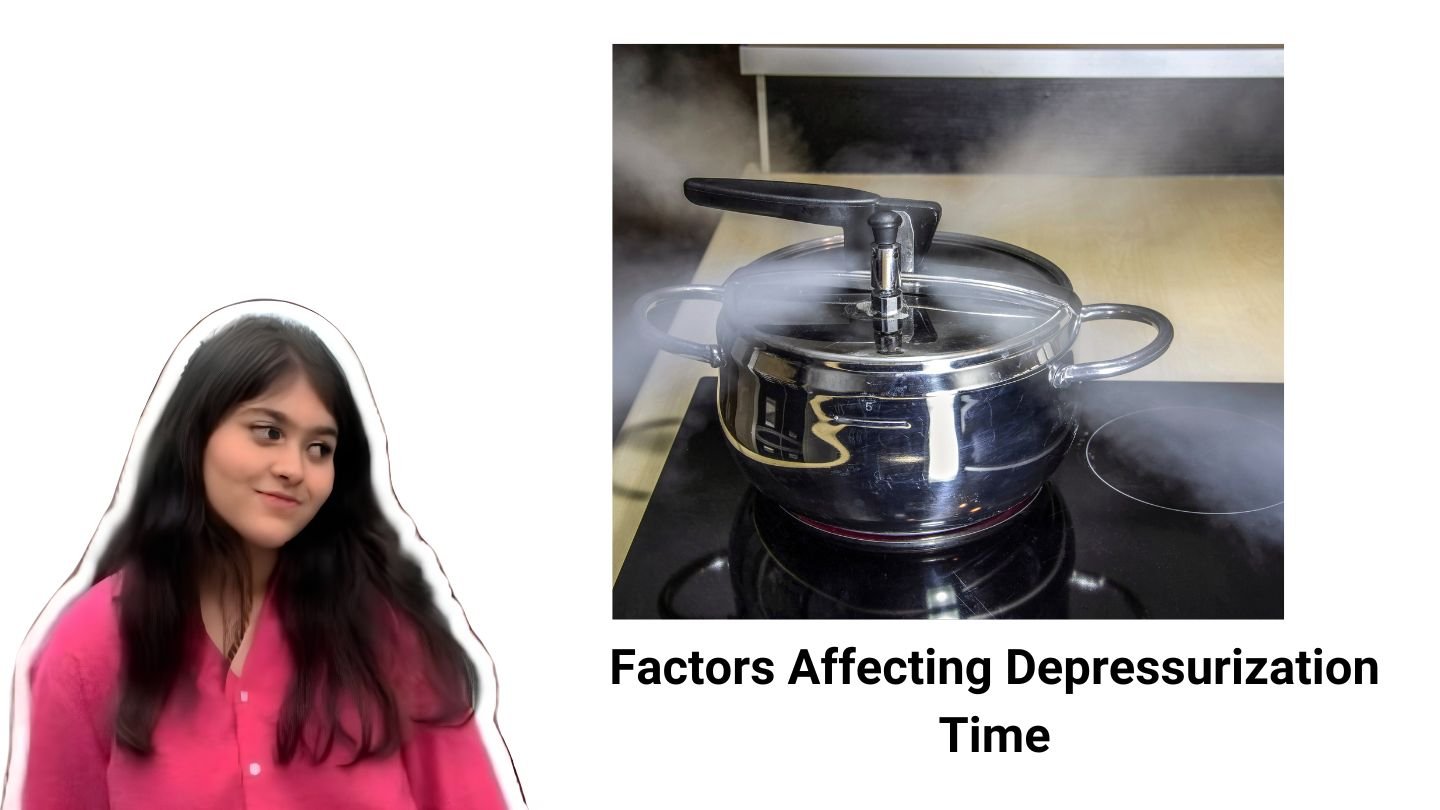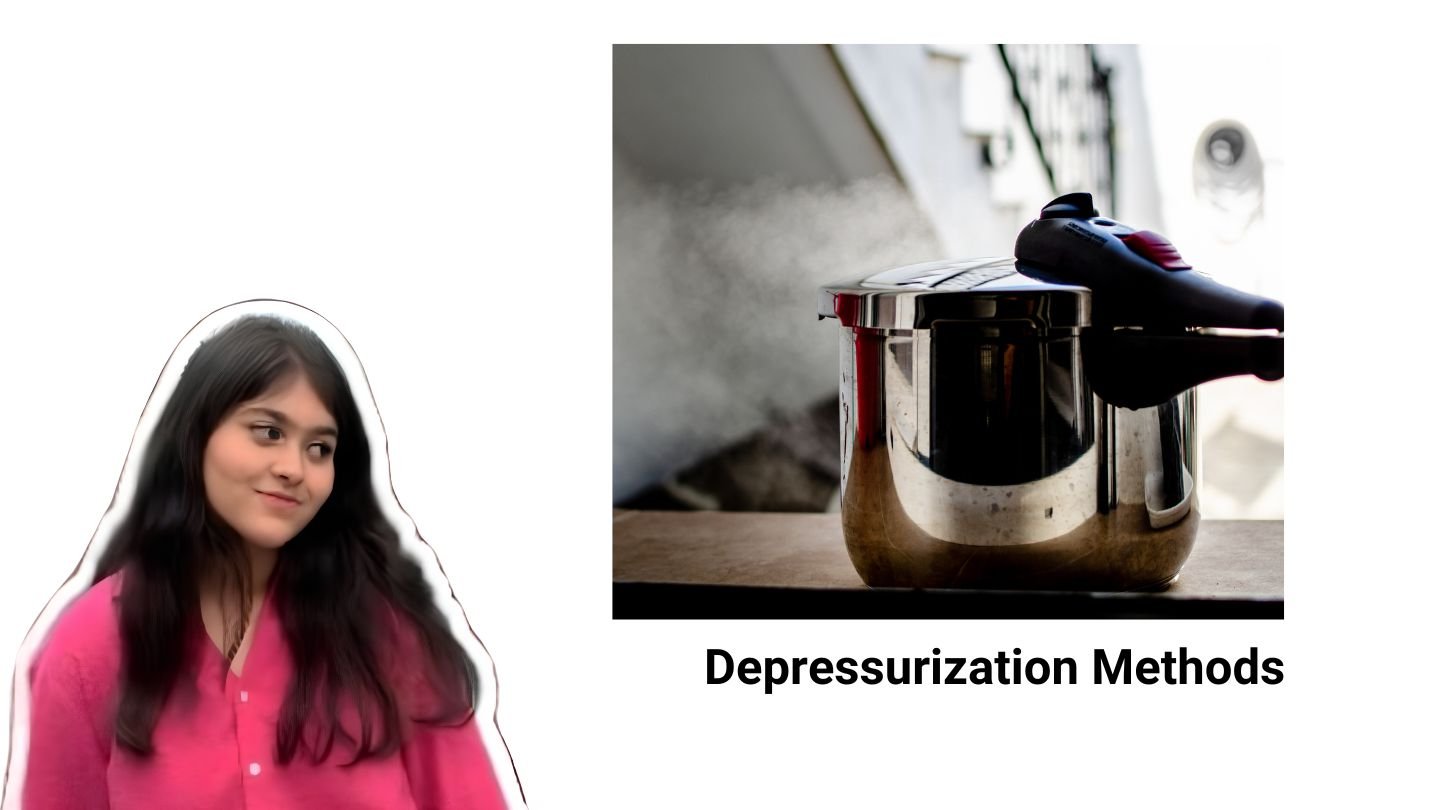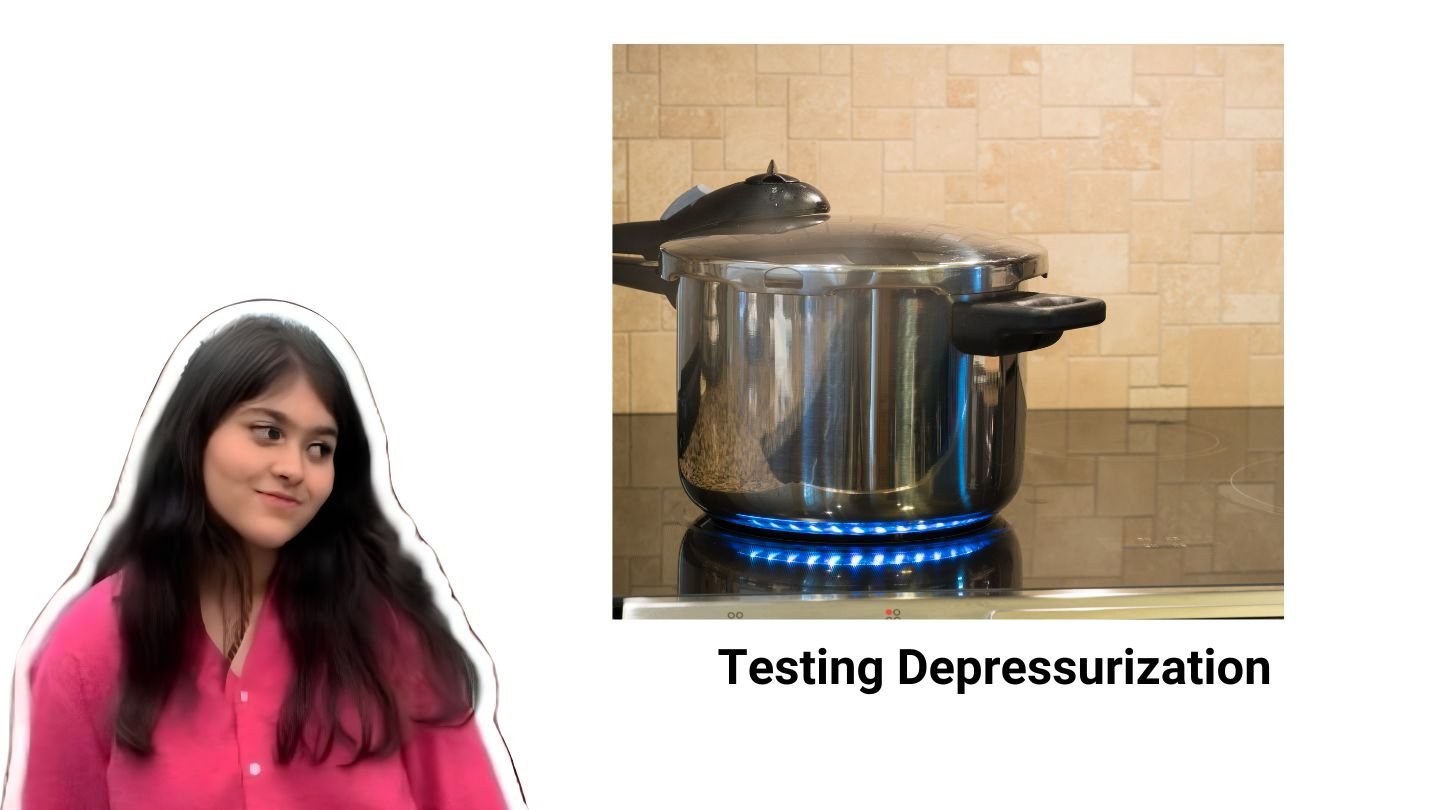How long does it take for a pressure cooker to depressurize? The answer can vary.
Typically, it takes 10 to 30 minutes for a pressure cooker to depressurize. Pressure cookers are fantastic kitchen tools. They save time and keep food tasty. But, it’s important to know how they work. Depressurizing a pressure cooker safely is key.
This process involves releasing the built-up steam. The time it takes can depend on the method you use. Whether you use natural release or quick release, each has its own benefits. Understanding the depressurizing time helps in planning your cooking. Let’s dive into the details to ensure your meals are both delicious and safe.
Factors Affecting Depressurization Time

The time it takes for a pressure cooker to depressurize depends on several factors. Understanding these factors can help you plan your cooking time better. Let’s explore some key elements that influence depressurization time.
Type Of Pressure Cooker
Different types of pressure cookers have varying depressurization times. Electric pressure cookers usually take longer to depressurize compared to stovetop pressure cookers.
This is because electric models have safety mechanisms that release pressure more slowly. Stovetop models can be manually controlled, allowing quicker pressure release.
Here’s a quick comparison:
| Type of Pressure Cooker | Depressurization Time |
|---|---|
| Electric Pressure Cooker | 10-30 minutes |
| Stovetop Pressure Cooker | 5-15 minutes |
Amount Of Pressure Inside
The amount of pressure built up inside the cooker also affects the depressurization time. Higher pressure levels take longer to reduce compared to lower pressure levels.
If your recipe requires high-pressure cooking, be prepared for a longer wait time. Conversely, recipes with lower pressure will allow for quicker depressurization.
Here are some examples:
- High pressure (15 PSI): 15-30 minutes
- Low pressure (6-8 PSI): 5-10 minutes
Understanding these factors can help you better manage your cooking schedule. Knowing your pressure cooker’s type and the pressure level needed for your recipe will give you a clearer idea of how long it will take to depressurize.
Depressurization Methods

When using a pressure cooker, knowing how to depressurize it is crucial. There are two primary methods to safely release pressure: Natural Release and Quick Release. Each method serves a specific purpose and affects cooking outcomes differently. Understanding these methods ensures your dishes are cooked perfectly and safely.
Natural Release
Natural Release allows the pressure to drop on its own. This method takes 10 to 30 minutes. The time depends on the cooker and the amount of liquid inside. During this time, avoid opening the lid. The pressure decreases slowly, which helps retain the food’s moisture. It’s ideal for soups, stews, and large cuts of meat. Natural Release is a hands-off approach. It ensures flavors meld together beautifully.
Quick Release
Quick Release involves manually releasing the pressure. This is done by turning a valve or pressing a button. The steam escapes rapidly, which can take a few minutes. Quick Release is perfect for vegetables and delicate foods. It prevents overcooking and preserves texture. Be cautious when using this method. The steam is hot and can cause burns. Always use a utensil to turn the valve. Keep your hands and face away from the steam.
Safety Measures
Using a pressure cooker can be a time-saver in the kitchen. But safety is very important when handling this powerful appliance. Knowing how to safely depressurize your pressure cooker is crucial. This section focuses on key safety measures to follow.
Avoiding Sudden Steam Release
Sudden steam release can be dangerous. Always allow the pressure to release naturally. This helps avoid accidents and ensures your food is cooked properly. Use the natural release method unless the recipe specifies otherwise. This method can take anywhere from 10 to 30 minutes.
Handling The Pressure Valve
The pressure valve is a critical component. Always handle it with care. Before using the pressure cooker, check the valve for any blockages. A blocked valve can cause pressure to build up, leading to potential hazards. When releasing pressure, use a long spoon to turn the valve. This keeps your hand at a safe distance from the steam.
Tips For Quick Depressurization
Pressure cookers are a great tool for quick and efficient cooking. But waiting for them to depressurize can be tedious. Here are some tips to speed up the process.
Using Cold Water
One effective method is using cold water. Place the pressure cooker under a stream of cold running water. Make sure not to cover the vent or valve. The cold water will help release the pressure faster. This method works well for most models. Be cautious while handling the hot cooker to avoid burns.
Changing The Cooking Location
Another quick tip is changing the cooking location. Move the pressure cooker to a cooler spot in the kitchen. This helps reduce the pressure quickly. A cooler environment speeds up the depressurization process. This tip is handy when you are in a hurry.
Testing Depressurization

Testing depressurization in a pressure cooker is crucial. It ensures the safety and integrity of your meals. Understanding the process helps prevent accidents and guarantees perfectly cooked food. This section will guide you through visual cues and opening the pressure cooker safely.
Visual Cues
When the pressure cooker depressurizes, you can observe several visual cues. These cues indicate it’s safe to open.
- The steam stops releasing from the valve.
- The float valve drops down completely.
- The lid lock mechanism releases.
These signs show that the pressure inside has reduced to a safe level. Always wait for these cues before attempting to open the cooker.
Opening The Pressure Cooker
Once you notice the visual cues, it’s time to open the pressure cooker. Follow these steps carefully:
- Turn off the heat and unplug the cooker.
- Allow it to cool naturally for 10-15 minutes.
- Use a utensil to move the valve to the ‘venting’ position, if necessary.
- Gently remove the lid by turning it counterclockwise.
Opening the pressure cooker correctly avoids any mishaps. Always handle it with care to enjoy safe and delicious meals.
Common Mistakes To Avoid
Using a pressure cooker can save time. But making a mistake can lead to problems. Learning from common mistakes ensures a smooth cooking experience.
Forgetting To Turn Off The Heat
One common mistake is forgetting to turn off the heat. Leaving the heat on can overcook your food. It can also cause the pressure to build too high. Always remember to turn off the heat once the cooking time is up. This step is crucial for the pressure to decrease safely. A simple checklist can help you remember.
Opening The Lid Too Soon
Another mistake is opening the lid too soon. Doing this can be dangerous. It can cause hot steam to escape quickly. Always wait for the pressure to drop completely. Use the pressure release valve or wait for the natural release. Patience is key for safety and perfect cooking.
Frequently Asked Questions
How Long Does It Take For A Pressure Cooker To Depressurize?
When using the natural release method, it typically takes around 10 to 20 minutes for a pressure cooker to depressurize. This time may vary depending on the ingredients and pressure level used in the cooking process.
Is It Safe To Manually Release Pressure From A Pressure Cooker?
Yes, it is safe to manually release pressure from a pressure cooker by turning the valve to the “Venting” position. However, be cautious of hot steam and always use oven mitts or a kitchen towel to protect your hands from burns.
Can You Quick-release Pressure From A Pressure Cooker?
Yes, you can quick-release pressure from a pressure cooker by carefully turning the pressure release valve to the “Venting” position. This method allows the steam to escape rapidly, reducing the depressurization time to just a few minutes.
Why Is It Important To Allow A Pressure Cooker To Depressurize Naturally?
Allowing a pressure cooker to depressurize naturally is important to ensure that the food continues cooking in residual heat without overcooking. This gradual process helps retain the food’s texture, moisture, and flavors, resulting in a more delicious and evenly cooked dish.
Conclusion
To summarize, understanding pressure cooker depressurization is essential for safe cooking. Natural release takes about 10-30 minutes. Quick release is faster but less safe. Always follow your recipe’s instructions. Different foods need different methods. Practice helps you learn the best times.
Patience ensures better results. Remember to handle your pressure cooker with care. Safety should always come first. Happy cooking!

Hey, I’m Nandoza Ahammad, passionate food enthusiast and creator of narzcookingcave.com, shares delicious recipes and cooking tips worldwide.

